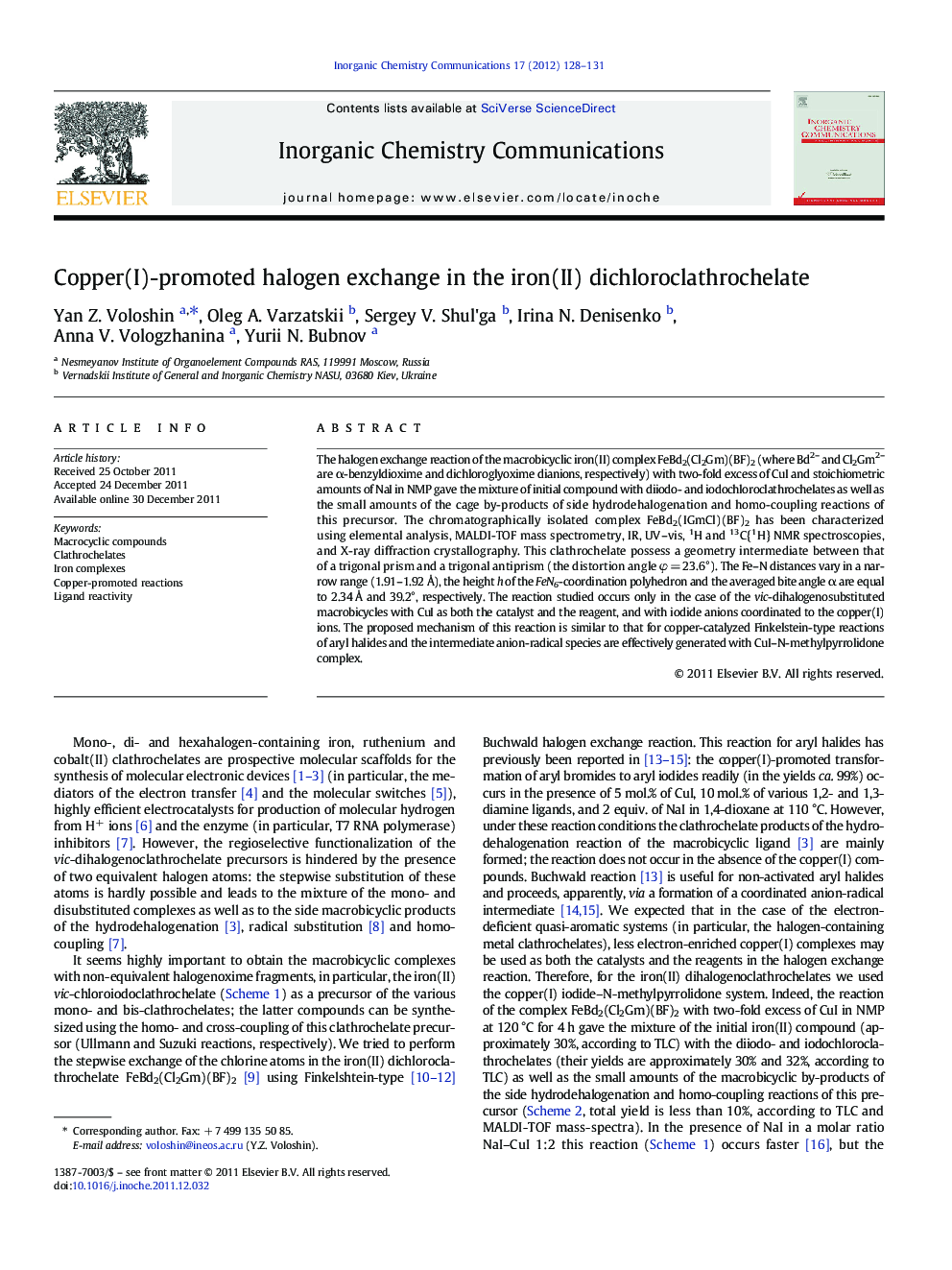| کد مقاله | کد نشریه | سال انتشار | مقاله انگلیسی | نسخه تمام متن |
|---|---|---|---|---|
| 1302074 | 1498973 | 2012 | 4 صفحه PDF | دانلود رایگان |

The halogen exchange reaction of the macrobicyclic iron(II) complex FeBd2(Cl2Gm)(BF)2 (where Bd2– and Cl2Gm2– are α-benzyldioxime and dichloroglyoxime dianions, respectively) with two-fold excess of CuI and stoichiometric amounts of NaI in NMP gave the mixture of initial compound with diiodo- and iodochloroclathrochelates as well as the small amounts of the cage by-products of side hydrodehalogenation and homo-coupling reactions of this precursor. The chromatographically isolated complex FeBd2(IGmCl)(BF)2 has been characterized using elemental analysis, MALDI-TOF mass spectrometry, IR, UV–vis, 1H and 13C{1H} NMR spectroscopies, and X-ray diffraction crystallography. This clathrochelate possess a geometry intermediate between that of a trigonal prism and a trigonal antiprism (the distortion angle φ = 23.6°). The Fe–N distances vary in a narrow range (1.91–1.92 Å), the height h of the FeN6-coordination polyhedron and the averaged bite angle α are equal to 2.34 Å and 39.2°, respectively. The reaction studied occurs only in the case of the vic-dihalogenosubstituted macrobicycles with CuI as both the catalyst and the reagent, and with iodide anions coordinated to the copper(I) ions. The proposed mechanism of this reaction is similar to that for copper-catalyzed Finkelstein-type reactions of aryl halides and the intermediate anion-radical species are effectively generated with CuI–N-methylpyrrolidone complex.
The reaction of the iron(II) dichloroclathrochelate with CuI and NaI in NMP gave the mixture of the homo- and heterodihalogenomacrobicycles. The reaction with Cu(I)–NMP system occurs only in the case of the vic-dihalogenosubstituted complexes. This halogen exchange reaction is useful for other electron-deficient metal complexes and organic compounds.Figure optionsDownload as PowerPoint slideHighlights
► The halogen exchange reactions of the iron(II) dihalogenoclathrochelates with copper(I) iodide–NMP system was studied.
► Reaction of the iron(II) dichloroclathrochelate with this system gave the mixture of homo- and heterodihalogenomacrobicycles.
► The reaction occurs with CuI as both the catalyst and the reagent in the case of the vic-dihalogenosubstituted macrobicycles.
► Complex Na[CuI2(NMP)n] with iodide anions, which are coordinated to the copper(I) ion, was used as a reagent.
► This halogen exchange reaction is useful for other electron-deficient metal complexes and organic compounds.
Journal: Inorganic Chemistry Communications - Volume 17, March 2012, Pages 128–131